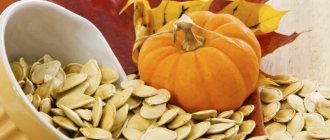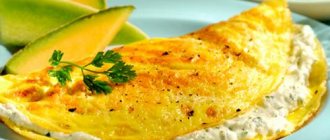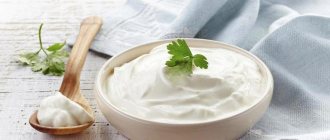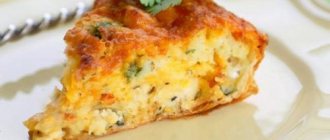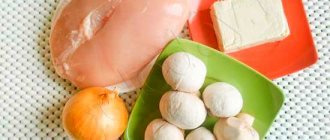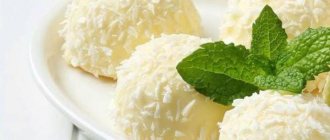Calorie content Dill, fresh. Chemical composition and nutritional value.
Nutritional value and chemical composition of “Dill, fresh”.
The energy value of fresh Dill is 43 kcal.
- cup sprigs = 8.9 g (3.8 kcal)
- 5 sprigs = 1 g (0.4 kcal)
Primary source: USDA National Nutrient Database for Standard Reference. Read more.
** This table shows the average levels of vitamins and minerals for an adult. If you want to know the norms taking into account your gender, age and other factors, then use the “My Healthy Diet” application.
Useful tips
Rejuvenating mask
It is no coincidence that dill is called the “herb of youth.” It helps improve complexion, increase skin tone, and eliminate existing inflammatory processes. To do this, just mix finely chopped dill with 1 tablespoon of honey and fresh cucumber, grated on a fine grater and apply the resulting mass to clean skin. Just 10 minutes with such a mask on your face will provide unsurpassed results.
Steam bath
Another simple recipe is a dill steam bath. Throw dill into a saucepan with boiling water, and after 5 minutes remove it from the heat. If you cover yourself with a towel and breathe in the healing fumes, you will get a double result. First, the airways will undergo unplanned antibacterial treatment. Secondly, the pores will cleanse and become much smaller, and the skin texture will become smoother.
Insomnia remedy
This ancient recipe was known several centuries ago. For people suffering from insomnia, healers prepared the following infusion: 3 tablespoons of dry dill seeds poured into 500 ml of dry red wine. The very next day, the medicine can be taken 1 tablespoon before bed.
5, total, today
( 181 votes, average: 4.62 out of 5)
Lentil soup with chicken broth
The benefits and harms of physalis
Related Posts
What are the benefits of Dill, fresh?
- Vitamin A
is responsible for normal development, reproductive function, skin and eye health, and maintaining immunity. - Vitamin B2
is involved in redox reactions, helps to increase the color sensitivity of the visual analyzer and dark adaptation. Insufficient intake of vitamin B2 is accompanied by impaired condition of the skin, mucous membranes, and impaired light and twilight vision. - Vitamin B9
as a coenzyme is involved in the metabolism of nucleic acids and amino acids. Folate deficiency leads to disruption of the synthesis of nucleic acids and proteins, resulting in inhibition of cell growth and division, especially in rapidly proliferating tissues: bone marrow, intestinal epithelium, etc. Insufficient folate intake during pregnancy is one of the causes of prematurity, malnutrition, and congenital deformities and child development disorders. A strong relationship has been shown between folate and homocysteine levels and the risk of cardiovascular disease. - Vitamin C
is involved in redox reactions, the functioning of the immune system, and promotes the absorption of iron. Deficiency leads to loose and bleeding gums, nosebleeds due to increased permeability and fragility of blood capillaries. - Potassium
is the main intracellular ion that takes part in the regulation of water, acid and electrolyte balance, and is involved in the processes of conducting nerve impulses and regulating blood pressure. - Calcium
is the main component of our bones, acts as a regulator of the nervous system, and is involved in muscle contraction. Calcium deficiency leads to demineralization of the spine, pelvic bones and lower extremities, increasing the risk of developing osteoporosis. - Magnesium
is involved in energy metabolism, the synthesis of proteins, nucleic acids, has a stabilizing effect on membranes, and is necessary to maintain the homeostasis of calcium, potassium and sodium. A lack of magnesium leads to hypomagnesemia, an increased risk of developing hypertension and heart disease. - Iron
is part of proteins with various functions, including enzymes. Participates in the transport of electrons and oxygen, ensures the occurrence of redox reactions and activation of peroxidation. Insufficient consumption leads to hypochromic anemia, myoglobin deficiency atony of skeletal muscles, increased fatigue, myocardiopathy, and atrophic gastritis. - Manganese
is involved in the formation of bone and connective tissue, and is part of enzymes involved in the metabolism of amino acids, carbohydrates, and catecholamines; necessary for the synthesis of cholesterol and nucleotides. Insufficient consumption is accompanied by slower growth, disturbances in the reproductive system, increased fragility of bone tissue, and disturbances in carbohydrate and lipid metabolism. - Copper
is part of enzymes that have redox activity and are involved in the metabolism of iron, stimulates the absorption of proteins and carbohydrates. Participates in the processes of providing oxygen to the tissues of the human body. Deficiency is manifested by disturbances in the formation of the cardiovascular system and skeleton, and the development of connective tissue dysplasia.
Dill
Dill is a herbaceous annual of the Apiaceae
, which has a straight stem and thin feathery leaves of a dark green color, yellow flowers collected in a small umbrella. Dill seeds are flat, ovoid, dry, light brown in color. Dill has a spicy, slightly aniseed aroma, a fresh, specific taste, the greens are juicy and crispy.
Central Asia is considered the homeland of dill, from where the plant spread almost everywhere. For successful growth and ripening, dill needs sun and well-drained soil, otherwise the greens are unpretentious.
Calorie content of dill
The calorie content of dill is 38 kcal per 100 grams of product.
Composition and beneficial properties of dill
Dill essential oil contains phytoncides that slow down the growth of bacteria and fungi; it is useful for metabolic disorders to cleanse the intestinal flora. Dill contains: vitamins A, C, folic acid, calcium and potassium. The product increases skin elasticity, cleanses mucous membranes, has a beneficial effect on vision, especially twilight vision, improves the functioning of the nervous system, and helps improve immunity. Dill has a slight diuretic effect and is also used as a choleretic property. Dill water, prepared from dill seeds, is still one of the most effective remedies for colic in babies; for adults, it significantly relieves heaviness and pain in the stomach after overeating, and helps normalize intestinal motility.
Harm of dill
In rare cases, individual intolerance to spicy dill occurs; essential oils can provoke allergic reactions. Excessive amounts of dill are not recommended for people with low blood pressure.
Dill in cosmetology
A paste of fresh dill is used as a skin whitening agent and fights age spots. Dill knot masks tighten the skin and stimulate collagen production (calorizator). By adding chopped dill to the ice for washing, you can increase skin tone and maintain a feeling of freshness and vigor for a long time.
Selection and storage of dill
It is most beneficial to use dill that has just been picked from the garden. If you need to buy dill, you should give preference to elastic, “fleshy”, juicy leaves of a dark green color, without signs of wilting or yellowing. You can store fresh dill for several days in the refrigerator, placing it in a container with clean water.
Dill can be dried, thoroughly washed and chopped, then used as a seasoning. Most often, dill is frozen, because with this storage method almost all vitamins and minerals are preserved. You can freeze chopped dill, or leave the sprigs whole.
Dill in cooking
It is most beneficial to eat aromatic dill in its raw form, seasoning soups, side dishes, cold appetizers and salads with it. Often dill, along with other herbs, is served as an independent appetizer for cheeses and grilled dishes. Herbs and dill umbrellas are traditionally added to marinades for preparing homemade preparations - salted and pickled vegetables; they not only give dishes a piquant taste, but also prevent the appearance of rot and mold. Dill is added to dough for bread, flatbreads and thick pancakes, but during heat treatment all the beneficial properties of dill are lost, only the spicy aroma and taste remains.
For more information about the benefits of dill, watch the video “Dill. Greens on our table" TV show "Live Healthy!"
Useful properties of dried dill
The seasoning we are considering contains many vitamins and minerals that have a beneficial effect on the human body.
What are the benefits of eating dried dill:
- Normalizes metabolism
. Essential oils, which are part of the spice, normalize metabolic processes in the body.
Improves the functioning of the digestive organs
. The essential oils already mentioned help normalize food digestion. Decoctions of dried dill treat colitis, constipation and flatulence. For this purpose, dill water is often used, which is indicated even for infants.
Increases appetite
. The vitamins and minerals in the seasoning help a person develop and increase their appetite.
Replenishes vitamin deficiencies in the body
. This is due to the rich composition of dried dill. To maintain vitamin balance in children, a decoction of dried dill is prepared, but even the use of the seasoning itself contributes to this.
Strengthens the immune system
. Iron, zinc, manganese, potassium and vitamins in this spice will help with this. In addition, when consuming the product, strength is restored.
Fights flu and colds
. Essential oils in dried dill have an antibacterial and antioxidant effect on the body.
Relieves cough
. The use of this seasoning is indicated for bronchitis, as well as allergic coughs. This speeds up recovery.
Lowers blood pressure
. The use of dried dill for hypertensive patients is indicated. In addition, the spice can dilate blood vessels.
Positively affects the functioning of the nervous system
. Having a calming property, dried dill helps fight depression, improves mood, and restores sleep.
Prevention of liver and gallbladder diseases
. This occurs due to the choleretic effect of this spice.
Regulates the menstrual cycle
. The vitamins contained in dried dill help the body of women and girls to recover during critical days.
- Positively affects vision
. The eyes need minerals and vitamins. When consuming the product, visual acuity improves, because dried dill is a storehouse of useful substances.
Chemical composition and energy value
Having minimal calorie content, dill nevertheless contains in its chemical composition a huge amount of rare elements and vitamins that are so necessary for the functioning of the body.
Below is the composition and energy value of dill in accordance with the reference book on the chemical composition of food products (author I.M. Skurikhin).
Energy (nutritional) value:
- calorie content - 40 kcal;
- proteins - 2.5 g;
- fats - 0.5 g;
- carbohydrates - 6.3 g;
- dietary fiber - 2.8 g;
- organic acids - 0.1 g;
- water - 85.5 g;
- unsaturated fatty acids - 0.1 g;
- mono- and disaccharides - 6.2 g;
- starch - 0.1 g;
- ash - 2.3 g;
- saturated fatty acids - 0.1 g.
Macronutrients:
- calcium Ca - 223 mg;
- magnesium Mg - 70 mg;
- sodium Na - 43 mg;
- potassium K - 335 mg;
- phosphorus P - 93 mg.
Microelements:
- Iron Fe - 1.6 mg;
- Zinc Zn - 0.91 mg;
- Copper Cu - 146 μg;
- Manganese Mn - 1.264 mg.
Vitamins:
- RR - 0.6 mg;
- beta-carotene - 4.5 mg;
- A (P3) - 750 mcg;
- B1 (thiamine) - 0.03 mg;
- B2 (riboflavin) - 0.1 mg;
- B5 (pantothenic acid) - 0.3 mg;
- B6 (pyridoxine) - 0.2 mg;
- B9 - 27 mcg;
- C - 100 mg;
- E (T3) - 1.7 mg;
- PP (niacin equivalent) - 14 mg.
The benefits and harms of the plant
Most people begin to get acquainted with dill in infancy, because pediatricians prescribe dill water for bloating and abdominal cramps from the first month of life.
Thanks to its chemical composition, healing abilities and minimal calorie content, this unpretentious plant fights many ailments:
- Blood cholesterol level - dietary fiber and vitamin PP regulate the level of “good” and “bad” cholesterol.
- Fighting seasickness - in this case, an infusion of crushed seeds (2 teaspoons per 1 glass of boiling water) will help. Take it 2 times a day.
- Acne, or acne - you should wipe problem areas of the body with an infusion of chamomile and dill seeds (1 teaspoon per 1 glass of boiling water) two to three times a day.
- Cleanses the intestines and relieves bloating - you can chew the spicy seeds with a crust of gray bread.
- To maintain visual acuity, you need to use compresses from a decoction of seeds, and beta-carotene, which is part of the seeds, will relieve eye fatigue.
- Wound-healing properties - pureed young greens will relieve skin inflammation and help heal wounds.
- Stimulates lactation in women during breastfeeding.
- Prevention of recurrence of cystitis - urologists advise drinking a decoction of the plant.
- Colds - the plant has an expectorant effect, thinning mucus, and is effective for coughs.
- Diabetes – Reduces blood glucose levels and promotes weight loss.
- As a diuretic and choleretic agent, it removes excess fluid from the body, reduces swelling and prevents the deposition of salts.
A universal contraindication for the use of the plant is individual food intolerance to the product.
When using dill as a medicinal plant, you should pay attention to the limitations of use and, in case of certain health problems, use the herb and preparations containing it carefully:
- lowers blood pressure due to its vasodilating effect, which is a warning for hypotensive patients;
- causes allergic reactions - you should pay attention to preparations containing dill if you have allergies, as dermatitis is possible - such cases were observed when working on large crops;
- tones the intestines and uterus, which should be taken into account during diarrhea and during pregnancy;
- reduces the thickness of the blood - if you are prone to bleeding, the herb should be used with extreme caution;
- Consumption in winter will help avoid vitamin deficiency.
Possible harm
Dill has a recognizable, pronounced aroma. The components included in its composition can reduce blood pressure. Therefore, in people with low blood pressure, herbal preparations based on dill, as well as the spicy essential oil of dill, can cause headaches and nausea.
Important! Women at risk of miscarriage in the early stages of pregnancy should also refrain from eating fresh dill. It can provoke muscle spasms and increased uterine tone, which will lead to adverse consequences.
Features of application
In addition to traditional and folk medicine, dill is used in a wide variety of areas:
- Cosmetology . True to its name, fragrant dill in the form of an essential oil with a sweetish-spicy odor is used in the form of fragrances for soaps, creams, toothpastes, and colognes. Such products can relieve irritation after shaving, eliminate allergic itching and lighten age spots and freckles.
- Food and canning industry. Uses all parts of the plant except the roots. The dried herb is used in various spice mixtures for cooking. Flowers and seeds are used for canning vegetables, preparing aromatic vinegar, pickling herring, and for flavoring curd mass and processed cheese. The seeds are added in small quantities to apple desserts.
- Liquor and vodka industry. Uses the seeds to produce aperitifs and impart tonic properties and a spicy aroma to alcoholic drinks.
- Aromatherapy . Uses essential oil for increased excitability to strengthen the nervous system, improve mood and restore sleep.
When taking care of proper nutrition, you should consume more dill, because it has wonderful taste.
In addition, the plant can be used as a medicine, because it has many beneficial and medicinal properties with a minimum of calories.
Sources:
https://health-diet.ru/base_of_food/sostav/14028.php https://www.calorizator.ru/product/vegetable/dill https://fermer.blog/bok/ogorod/ukrop/polza-ukropa/ 3291-skolko-kaloriy-v-ukrope.html
Application
As a seasoning, dill can go well with any dish. Fresh dill is added to salads, soups, fish and potato dishes. Dill goes especially well with red fish - salmon, salmon. Tea is brewed with dill, tinctures and lotions are made.
Market Analytics
- COVID-19 is changing the rules of the game in the cosmetics market
- Beauty of the future: cosmetic innovations 2020
- New ingredients are the driving force of the cosmetics industry
Convenient search for beauty salons on our website
Beauty salons in Moscow Beauty salons in St. Petersburg Beauty salons in Ekaterinburg Beauty salons in Novosibirsk
Latest blog posts on our website
- Naturecream / Geranium (Pelargonium) oil for skin health and beauty
- Prostye-sovety / Save on a beauty salon: procedures that can be done at home
- Naturecream / Growth Factor - brings back youth?
- Oksana-Lezina / 3 effective abdominal exercises from a fitness instructor for beginners
- Prostye-sovety / Making perfect curls at home
- Prostye-sovety / Which hair removal method to choose
- Naturecream / Wrinkles Puppets
- Naturecream / PEPHA-TIGHT - instant skin lifting
- Naturecream / Blue light - a danger to the skin
- Naturecream / Cocoa Butter – A treat for the skin
Latest forum topics on our website
- Mrs._Smith / Badly sunburned! What to do?((
- Ice / Is it necessary to combine fitness classes with a diet?
- Antonova / What can be used for hair loss?
- Radio operatorKat / Who was on a protein diet?
- Suzanna / Mesotherapy on the face
Other articles in this section
| Oakleaf lettuce The Oakleaf lettuce variety (oak lettuce) was developed in France in the 17th century. Its leaves are very similar in shape to oak leaves, which is why the salad got its name. The leaves form a loose rosette. There are two varieties of oakleaf lettuce - green and red. The closest variety to it is butter lettuce. |
| Boiled potatoes Potatoes are a starchy root vegetable of South American origin. The average height of a potato bush is 30-40 cm; tubers located underground are eaten. Potato tubers are considered ripe when the above-ground part of the plant dries out. |
| Jicama Jicama is a sweet root vegetable of the legume family native to South America. Jicama tubers resemble potatoes, have a brown, dense skin and white, juicy, crisp flesh. Raw jicama tastes similar to pear or apple. It is most often found in Mexico and other Central American countries, where it is also called Mexican potato, Mexican turnip, and Mexican water chestnut. |
| Nettle Nettle is known throughout the world for its “stinging” leaves. The leaves and stem of nettle are covered with hairs, the chemical in which causes irritation when in contact with bare skin. |
| Pak choi cabbage Pak choi cabbage is a leafy vegetable from the cruciferous family. It is widespread in Asian countries, where it has been grown for more than one and a half thousand years. Translated from Chinese, the name means “white vegetable”, so it is sometimes called white or Chinese cabbage. |
| Sweet green pepper Sweet pepper is shaped like a bell with thick, juicy walls. Its sweet flavor, crunchy texture, and vibrant color make peppers a great addition to any dish. The homeland of bell pepper is Mexico and Central America. Green bell peppers are an unripe fruit that differs from yellow and red ones in their unique chemical composition. |
| Beetroot The homeland of wild beets is located in North Africa, where they began to grow in prehistoric times. Then people ate only beet leaves, and the ancient Romans were the first to use the root crop for food. Thanks to them, beets spread throughout Europe. Beetroot became especially popular in the 19th century, when it was discovered that this vegetable could replace sugar cane in terms of sugar content. Beetroot is a beautiful red-violet root vegetable with a sweet taste. |
| Horseradish Horseradish belongs to the cruciferous family, like radish, cabbage and mustard. The long, pointed root of the plant, which has a pungent taste and pungent aroma, is used in cooking. This vegetable crop is common in Eastern Europe and the Mediterranean. |
| Boiled peas Peas belong to the legume family. This unpretentious plant is grown both in warm Asian countries and in Northern European countries. Peas have high nutritional value and are well suited for vegetarian dishes. |
| Red onion Red onion stands out among other members of the onion family with its rich red-burgundy, almost purple color. It tastes sweeter, has a more subtle odor and does not cause as much irritation to the mucous membranes as other types of onions. |

